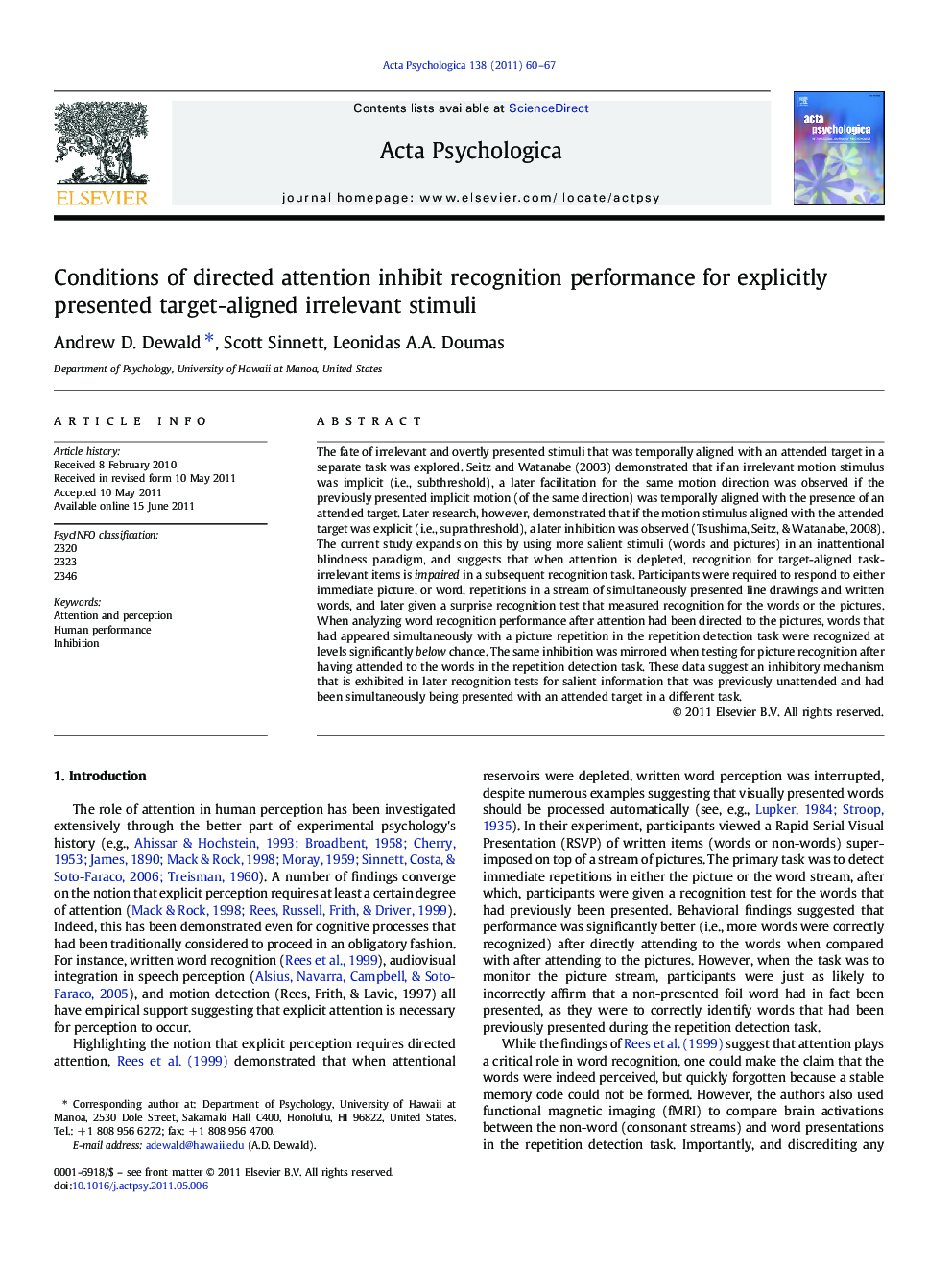| Article ID | Journal | Published Year | Pages | File Type |
|---|---|---|---|---|
| 920171 | Acta Psychologica | 2011 | 8 Pages |
The fate of irrelevant and overtly presented stimuli that was temporally aligned with an attended target in a separate task was explored. Seitz and Watanabe (2003) demonstrated that if an irrelevant motion stimulus was implicit (i.e., subthreshold), a later facilitation for the same motion direction was observed if the previously presented implicit motion (of the same direction) was temporally aligned with the presence of an attended target. Later research, however, demonstrated that if the motion stimulus aligned with the attended target was explicit (i.e., suprathreshold), a later inhibition was observed (Tsushima, Seitz, & Watanabe, 2008). The current study expands on this by using more salient stimuli (words and pictures) in an inattentional blindness paradigm, and suggests that when attention is depleted, recognition for target-aligned task-irrelevant items is impaired in a subsequent recognition task. Participants were required to respond to either immediate picture, or word, repetitions in a stream of simultaneously presented line drawings and written words, and later given a surprise recognition test that measured recognition for the words or the pictures. When analyzing word recognition performance after attention had been directed to the pictures, words that had appeared simultaneously with a picture repetition in the repetition detection task were recognized at levels significantly below chance. The same inhibition was mirrored when testing for picture recognition after having attended to the words in the repetition detection task. These data suggest an inhibitory mechanism that is exhibited in later recognition tests for salient information that was previously unattended and had been simultaneously being presented with an attended target in a different task.
Research highlights► This study investigates the fate of explicitly presented, but irrelevant stimuli in a dual-task paradigm. ► Resulting data suggests that irrelevant stimuli temporally aligned with task-relevant targets. ► The task-relevant targets are inhibited in a subsequent surprise recognition test.
